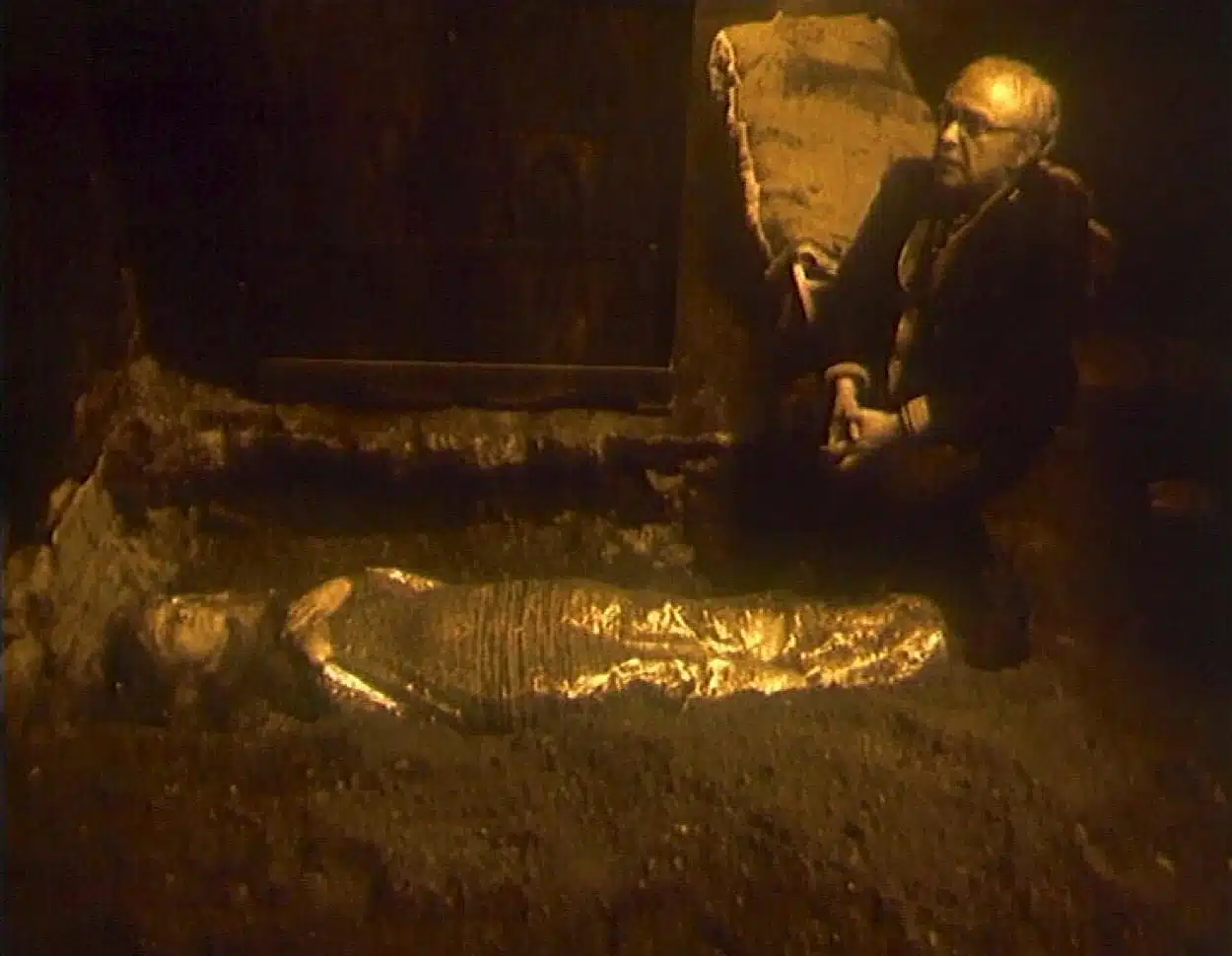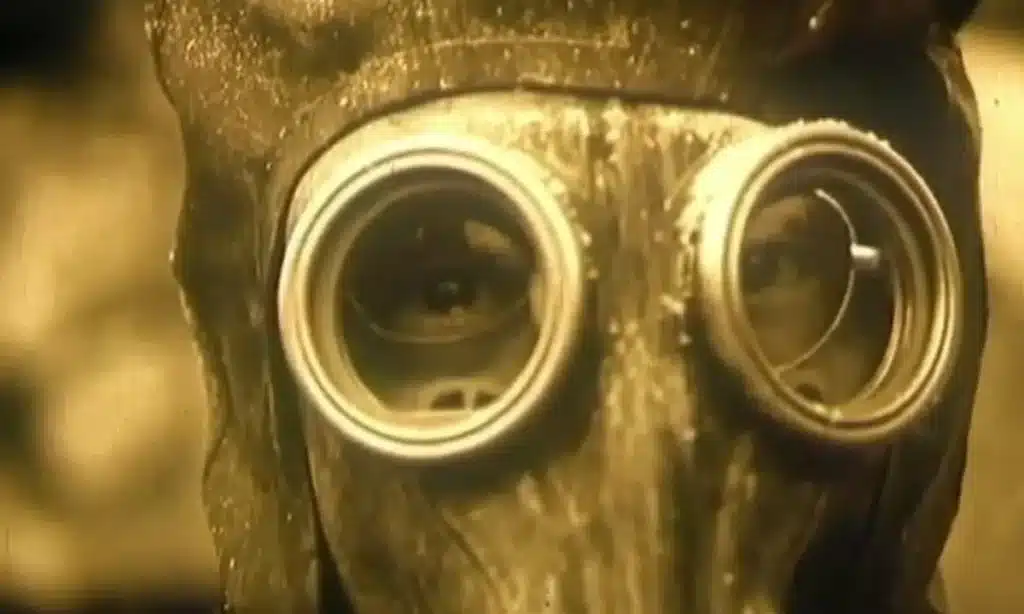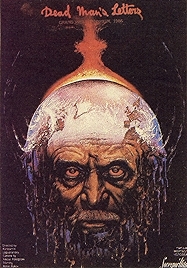If there’s a prize for the dourest sci-fi movie ever made, surely Dead Man’s Letters would win it. Sometimes the original Russian title, Pisma Myortvogo Cheloveka is translated as Letters from a Dead Man, which is hardly any jollier. While Blade Runner or Solaris or Dark City or Threads will all have their advocates, this strange, dark, almost entirely subterranean movie set in the bowels of a museum in the aftermath of a nuclear attack has to be a contender.
The movie’s opening scene more or less says it all: a dark, stygian basement, lit in garish yellow/orange, where an old man is tending to a woman who appears to be dying, while also writing a letter to his absent son. For light, Professor Larsen (Rolan Bykov), a Nobel-prize winner we later learn, has a generator hooked up to a bicycle crank arrangement, which he is pedalling. If he slows down, the light dims.
Around him a bunch of deadbeats and the clunky over-engineered technology of the past. Outside winds howl and mists roll. The army are shooting anyone who emerges during curfew. But Larsen needs medicine for his mortally ill wife, whose scabbed head suggests radiation sickness. Impossible he’s told. Unless he goes out on the “funeral train”, which is how the recently dead are removed from this bunker. So that’s what he does, lying next to a corpse as the train shuttles him out into what’s left of the world, where the black market and the barter economy still just about function.
It is grim. Utterly grim. Director Konstantin Lopushansky shoots exteriors wide, the better to catch the full-scale devastation and desolation. Then gets up close on people, to register faces marked by exhaustion and hopelessness. At one point he does a flashback to when it all happened. We see ICBM rocket after rocket blasting out of their silos in the dark, the flames from their burning fuel again that sickly orange monochrome. It’s queasily impressive. Followed by slo-mos of cities being destroyed, again impressively bleak.
Unlike a lot of post-apocalyptic movies, there is no sense of starting again. At one point an intellectual sketches out his vision of the future and is mocked as an old “humanist” by a younger man who sets out his more realistic notion of what’s to come – a dog-eat-dog world running on mutual hate.
This was the USSR’s first post-apocalyptic film, the books say, released in 1986 when Gorbachev’s reforms were loosening things up culturally in the USSR. Lopushansky takes that licence and runs with it, but is careful not to identify the site of the devastation as the USSR – the fact that Russian is the spoken language to one side, it could easily be the USA.
To slightly take issue with that “USSR’s first post-apocalyptic film” claim. Surely Tarkovsky’s Stalker, from 1979, is post-apocalyptic? Lopushansky was apprenticed to Tarkovsky and was a production assistant on Stalker. In fact Dead Man’s Letters almost functions as a homage to the great director – the mood, lighting, lens choices, length of scenes and edits of Tarkovsky can all be detected here.
So, too, can the influence of the downbeat Western sci-fis – Alien, THX 1138, Silent Running. And the ripples from this film reach as far as the dark sci-fis of years to come – Children of Men, for example, has clearly had an eyeball on this.
For all the efforts of Lopushansky not to yoke it too closely to the USSR, and the influences from elsewhere, this is a deeply Russian film, with a dark poetry to it that’s starkly appropriate. Death is dealt with in a matter of fact way, not as an opportunity for an actor to get one last grandstanding moment in front of the camera. All the performances, in fact, serve the movie, not vice versa. And if Lopushansky’s stylistics occasionally overreach and things get a little bit too symbolic, it’s a small price to pay. Bring a torch.
Dead Man’s Letters – Watch it/buy it at Amazon
I am an Amazon affiliate
© Steve Morrissey 2023


